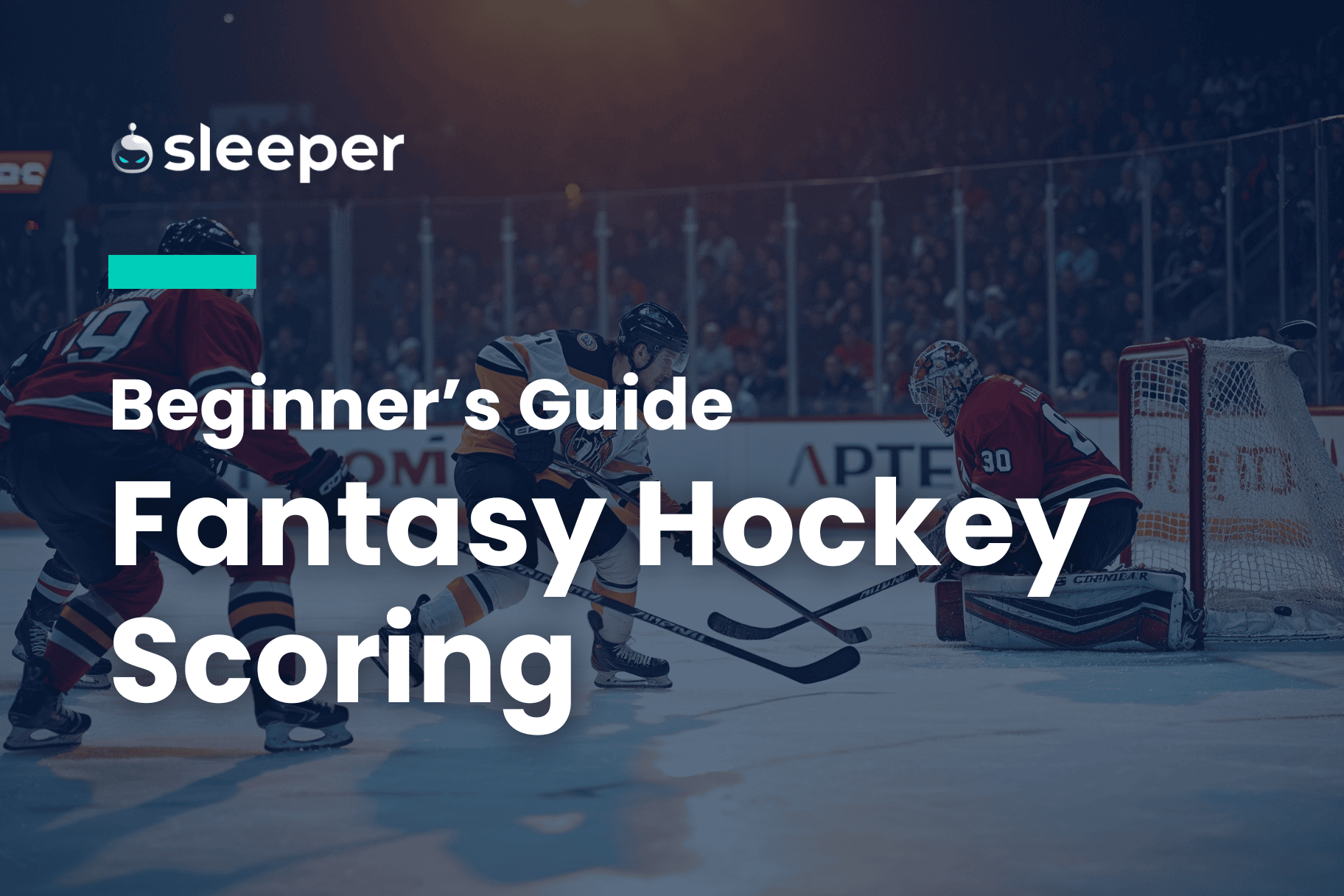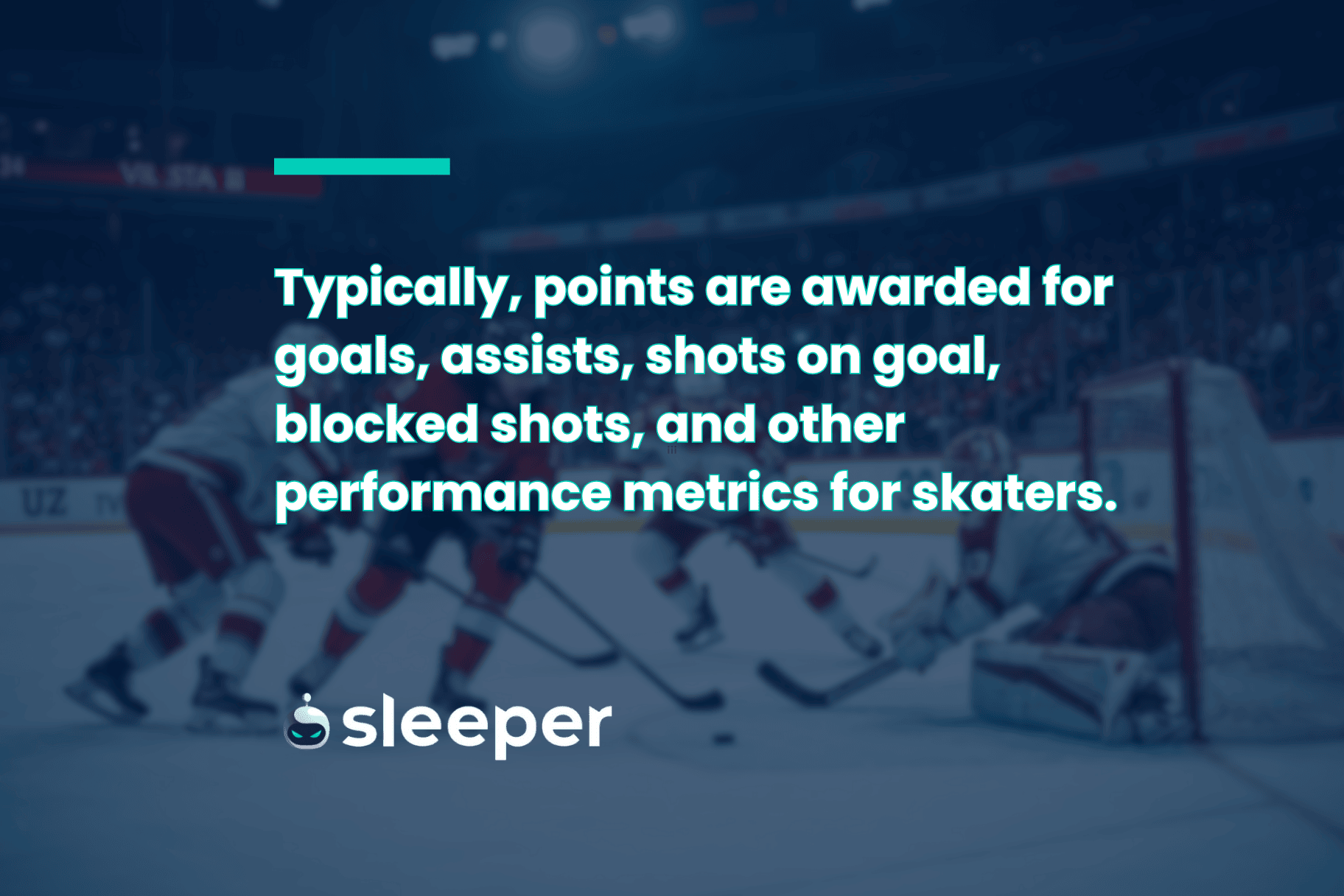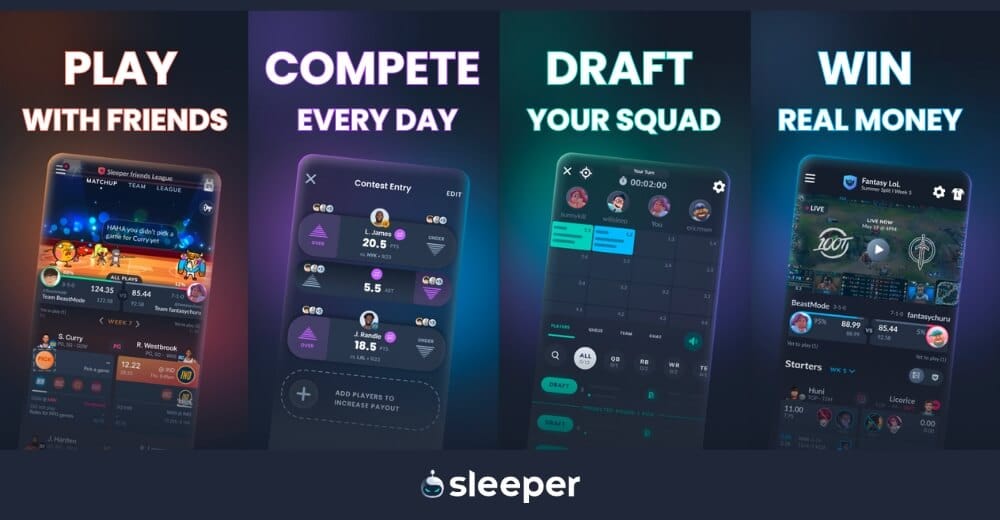Fantasy hockey leagues can have several different types of scoring systems. We’ll explain each one in this article.

Whether you're a newcomer eager to grasp how scoring works in various fantasy hockey leagues or a seasoned player exploring new scoring systems, this article is for you. Dive into the intricacies of each scoring system in fantasy hockey, including H2H, Roto, Season Points, and more.
How Does Fantasy Hockey Scoring Work?
H2H Points
Head-to-head points scoring is perhaps one of the most familiar scoring systems for fantasy hockey players, and fantasy sports players in general. Fantasy football is the most popular fantasy sport and most FFL leagues use H2H points scoring.
In an H2H Points league, each player earns a particular amount of points for achieving different stats. Goals, assists, points, hits, blocks, and power-play points are just some of the possible statistics that will earn points for a skater. Wins, shutouts, saves, and goals against are some that will impact the points total for goalies.
Head-to-head points leagues typically have two teams going against each other for a calendar week. Whichever team earns more total points during the matchup gets a win in the standings.
Head-to-Head Each Categories
A head-to-head each categories scoring system may seem complicated but it’s actually rather simple. These fantasy hockey scoring leagues have each team compiling different stats throughout the week.
There are usually around 10 scoring categories in these leagues. For skaters, goals, assists, plus/minus, power-play points, shots on goal, and hits are some of the most common. Wins, goals against average, save percentage, and shutouts are commonly used for goalies.
In head-to-head each categories leagues, whichever team has more of a category during a matchup earns one point for that week.
For example, if someone wins goals, assists, plus/minus, power-play points, shots on goal, and hits, but loses goalie wins, goals against average, save percentage, and shutouts, they would be 6-4-0. The first numbers is the amount of categories won, then lost, then tied.
Head-to-Head Most Categories
A scoring system in fantasy hockey of head-to-head most categories combines the H2H points and head-to-head each categories in a way.
The fantasy hockey teams compile stats throughout the week in certain categories. Whoever wins more categories gets a win for the week, just like in H2H points leagues.
These can be interesting because winning all 10 categories counts just the same as a 6-4 victory in the standings.
Rotisserie (or “Roto”)
Rotisserie isn’t just for chicken. It’s for fantasy hockey as well. Roto scoring was one of the original ways of playing fantasy hockey (and all fantasy sports, for that matter).
While you’re matching up against a single team per week in head-to-head leagues, you’re technically competing against the entire league in rotisserie (roto) leagues.
Rotisserie leagues use certain categories and you earn standings points for how you finish in those categories. If you’re leading a category in a 10-team league, you get 10 points. If you’re in second, you get nine points, and so on.
This rotisserie scoring allows for different types of strategies to be used throughout the season.
Season Points
Fantasy hockey leagues that use the season points scoring system are similar to roto leagues. You’re competing against every single team in the league all season long.
Players earn points for different stats, just like in H2H points leagues, and whoever compiles the most points over the course of the season wins.
Like rotisserie leagues, Season Points scoring allows for players to have different strategies. Some fantasy hockey managers may target certain categories while others value different statistics.

DFS Scoring
While it's different than season-long leagues, daily fantasy sports (DFS) is another way to play fantasy hockey, but instead of drafting a roster of players to manage for a season, you're picking for a single game. In DFS Hockey, you'll typically pick a group of players to score more or less than a projected statistic in one game. Common DFS categories include goals, assists, shots on goal, points, power play points, blocks, saves, goals against and shutouts.
What is the Best Fantasy Hockey Scoring System?
When it comes to determining the best fantasy hockey scoring system, the answer is largely subjective. It can very much depend on personal preference as well as the goal of the league.
Some leagues limit the statistics that players earn points or categories for to only a handful of stats. Others may have a wide variety of categories or ways to earn points, such as leagues affectionately known as “banger” leagues.
The fantasy hockey scoring system best for you may depend on your level of experience with both hockey and fantasy sports in general. If you’re familiar with fantasy football’s H2H points, that may be best. If you play fantasy baseball with Head-to-Head Each Categories, that could be your go-to.
For brand-new fantasy hockey managers, season points may be the easiest to understand. You’re constantly earning points against the entire league and could move up and down the standings quite a bit. However, H2H points allows for weekly competition and strategy as well.
Frequently Asked Questions
What are the most common scoring categories in Fantasy Hockey?
The most common scoring categories in fantasy hockey line up with the statistics that mean the most.
Most fantasy hockey platforms use goals, assists, plus/minus, power-play points, shots on goal, hits, wins, goals against average, save percentage, and shutouts.
How do head-to-head points work in fantasy hockey?
Just like in other fantasy sports leagues, head-to-head points leagues have a weekly matchup with teams battling to score the most points. Your players earn points for achieving different statistics throughout the week, such as goals, hits, shots on goal, wins, saves and more.
What is the most common points system in fantasy hockey?
The most common points system for fantasy hockey is as follows: Goals are worth three points while assists are worth two. Shots on goal and blocks are both 0.5 points each, as are power-play points and shorthanded points. Plus/minus is one point each as well.
For goalies, a win is worth three points with a goal against a minus-one point. Saves are 0.2 points each while a shutout earns a goalie an extra two points.
See also:
Sleeper: Your To-Go Source for DFS and Hockey News!
Sleeper is the best DFS platform for finding detailed information on fantasy hockey and developing better strategies to win your league.
Stay up to date with the latest news and hockey results on sleeper. Join by signing up on the website or downloading the app.




